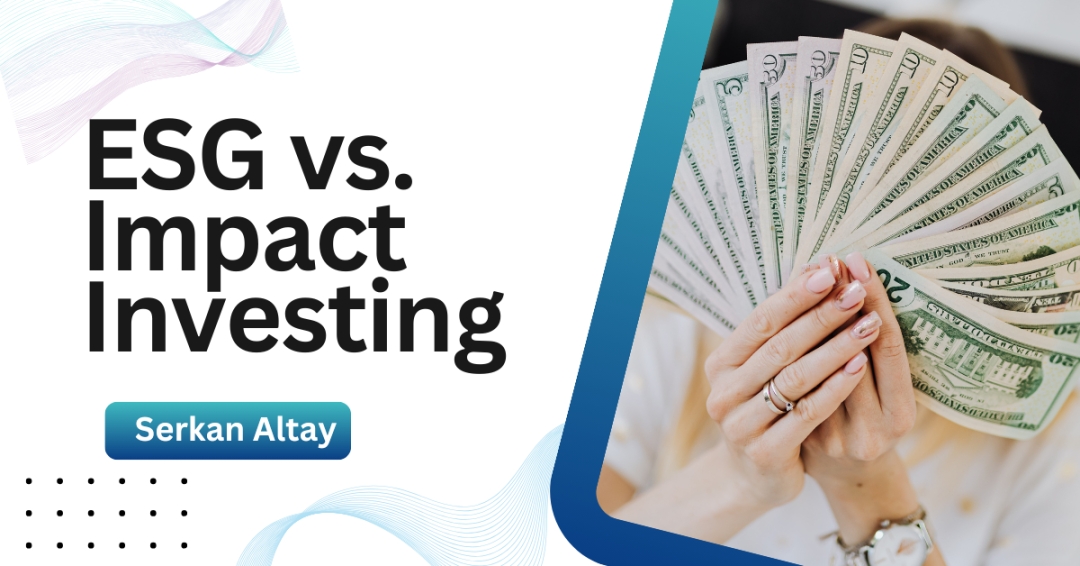
Serkan Altay, an impact investment advisor whose previous experience includes the management of financial assets at prominent foundations such as the Victoria Foundation and Rally Assets, underscores the critical distinction between Impact Investing and Environmental, Social, and Governance (ESG) Investing. While both approaches consider factors beyond financial returns, their goals, methodologies, and outcomes vary significantly. Understanding these differences is key for investors looking to make informed decisions and align their assets with specific values.
Defining the Objectives
Impact investing, according to Serkan Altay, is driven by a dual objective: generating measurable social and environmental benefits alongside financial returns. Investors in this space intentionally direct their capital to address pressing social or environmental challenges, aiming for tangible outcomes like the development of social enterprises, affordable housing, or renewable energy projects. These investments often rally around a mission to create positive change, with a strong focus on measuring and reporting the direct impact achieved.
In contrast, ESG investing is more concerned with enhancing financial performance by factoring in Environmental, Social, and Governance elements into investment decisions. The primary goal is to minimize risk and boost long-term returns by identifying companies with strong sustainability practices. By integrating ESG considerations, ESG investing seeks to support businesses that are less vulnerable to risks like regulatory fines, reputational damage, or environmental liabilities, thereby improving the overall risk-return profile of an investment portfolio.
Approaches and Methodologies
Impact investing is typically targeted and deliberate, focusing on investments in companies, projects, or organizations actively addressing social or environmental issues. A wide range of assets, including public stocks, debt, real estate, and private equity, can be considered in this strategy. Performance measurement in impact investing is centered on assessing the real-world impact on social or environmental outcomes, ensuring that the rally for positive change is both measurable and transparent.
On the other hand, ESG investing incorporates a screening process to evaluate companies based on their ESG performance. This includes both negative screening (excluding companies that don’t meet certain ESG standards) and positive screening (focusing on companies with strong ESG profiles). The ultimate aim is to ensure that an investor’s assets are aligned with sustainable practices while optimizing financial returns.
Outcomes and Impact
Impact investing directly finances initiatives designed to benefit society or the environment. From renewable energy projects to social enterprises, the goal is clear: create lasting, positive outcomes. Impact investors often prepare detailed reports to showcase the measurable results of their investments, ensuring that the assets allocated for social good are truly making an impact.
ESG investing, however, is more focused on financial performance and risk mitigation. By choosing companies with superior governance and sustainability practices, ESG investors hope to reduce the likelihood of financial setbacks from issues like environmental disasters or poor corporate governance. This approach rallies behind the idea that businesses with strong ESG standards are better positioned for long-term success, which, in turn, benefits investors’ bottom lines.
Investor Profiles and Types of Investments
Impact investing typically attracts individuals who are motivated by the desire to drive meaningful social or environmental change. These investors are often willing to take on greater risk in exchange for making a tangible impact. The investment universe for impact funds may be narrower, often avoiding large-cap companies in industries like technology or finance in favor of more mission-driven enterprises.
In contrast, ESG investing appeals to investors focused on optimizing shareholder value while aligning their portfolios with sustainability goals. ESG funds often hold large-cap companies, regardless of sector, and may include well-known names that are actively promoting their ESG initiatives. Larger companies, especially those with the resources to market their ESG practices, are often prominent in ESG portfolios. This can include industries that are traditionally seen as less sustainable, such as fossil fuel companies, which may still receive high ESG rankings due to their corporate governance and sustainability efforts.
Conclusion
When deciding between impact and ESG investing, investors should understand that while both strategies incorporate factors beyond financial returns, their focus, methods, and outcomes are distinct. Impact investing rallies behind measurable social and environmental impact, while ESG investing integrates sustainability considerations to enhance the risk-return profile of a portfolio. By understanding these differences, investors can better align their assets with their financial and ethical goals.
Media Contact
Company Name: Serkan Altay
Contact Person: Serkan Altay
Email: Send Email
City: Toronto
Country: Canada
Website: about.me/serkanaltay
